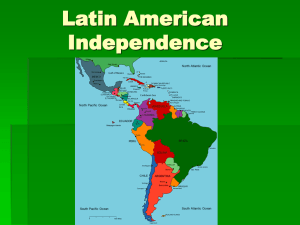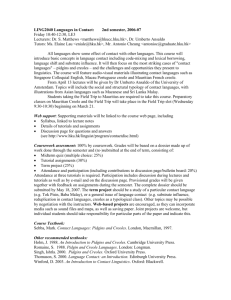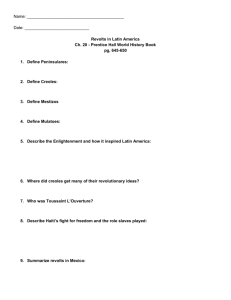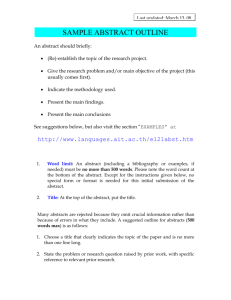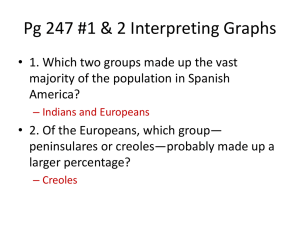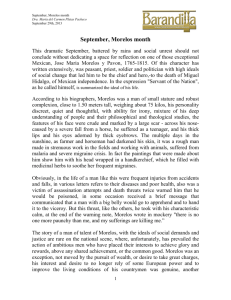Latin America fights for independence
advertisement
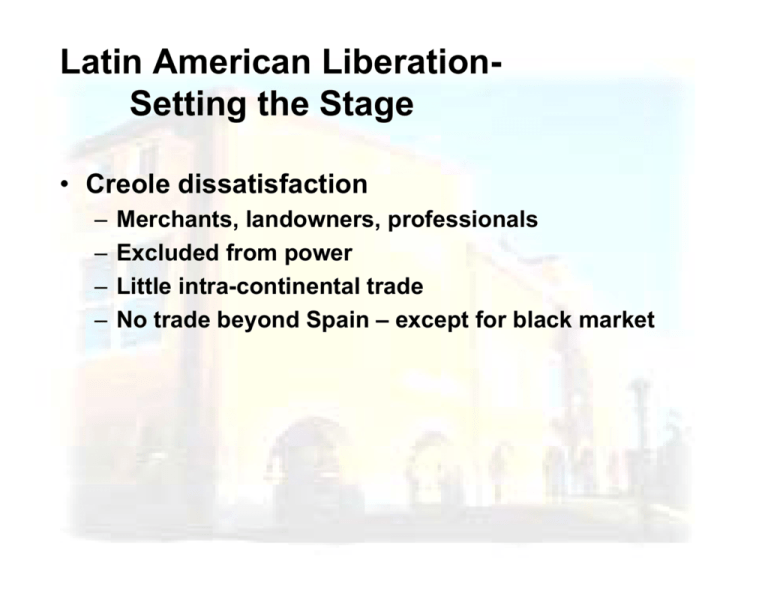
Latin American LiberationSetting the Stage • Creole dissatisfaction – – – – Merchants, landowners, professionals Excluded from power Little intra-continental trade No trade beyond Spain – except for black market Latin American Liberation- Setting the Stage • Lack of common interests • Complex society with differing needs – – – – Slaves Quechua speaking villagers Pure Spanish bloods Mestizos • What did they have in common? Competition at the top • Creoles – Common people hated these more • Landowners in the countryside • Rivals for commerce with burgeoning mestizo merchants and artisans in the cities – Status • Local govt. • Military • Peninsulares – Got the best government jobs – Best church positions – Political power with no constituency Bourbon Reforms 1700s • New viceroyalties but no real nationalism – New Grenada – Rio de la Plata/Buenos Aires • Intendents – to gain more control – Goes to Peninsulares – Reclaim positions from Creoles • Decree of Free Trade – More ports could trade with Spain (no one else) – Economic growth • Hurt Creole power Events in Europe • Spain - a century of misrule – – – – Bankruptcy Higher taxes Sale of offices War with England • Trafalgar • Lost sea power • = loss of trade • Napoleon – Invades Portugal • King flees to Brazil – Moves on to Spain – Brother king of Spain – 1808 • Leaves Spain weak and distracted • Fernando VII – Creoles set up de facto control 1808-1810 Tupac Amaru II – 1780-1783 – – – – Born - José Gabriel Condorcanqui Tupac Amaru I fought against conquest Initially anti-peninsulares Called for alliance with Creoles, Indigenous, & Mestizos – Peru and modern Bolivia – Perhaps over 100,000 died – Lasting impression Hidalgo and Mexico • 1808 Napoleon imprisons Fernando VII • This gives Creoles the opportunity to revolt • Fr. Miguel Hidalgo y Costilla – The grito de Hidalgo – Sept 16, 1810 – Rebellion against the enemies of Fernando • “Long live the Virgin de Guadalupe and death to the Spaniards” Father Hidalgo • • • • Creole Read the works of the French enlightenment Defied rules on abstinence The Inquisition had him on file Mexico • • • • Hidalgo called on the Indians Called for land reform Joined by mestizos and blacks True peasant army Mexico • • • • • Hidalgo lost control Attacked Creoles as well as Peninsulares Massacre at the Guanajuato Granary Hidalgo captured and executed Leadership moved to José Maria Morelos y Pavón Morelos • Mestizo priest • Better organized • Social Reforms – – – – End Slavery End caste system End tribute from Indians All were Americanos Morelos • • • • 1813 declared independence 1815 executed Very little Creole support Settled into a guerilla war in the south Iturbide and Guerrero • Agustín de Iturbide • Vicente Guerrero • 1820 Spain’s liberal revolution – Limited monarchy – Reduced power of military and clergy • Mexican conservatives feared importation of reforms Conservative Independence • Iturbide united with Vicente Guerrero • Welcomed triumphant into Mexico City • Established the empire of Augustín I – 1821 • Guerrero is out Bolívar and New Grenada Simón Bolívar • Wealthy Creole landowner • Charismatic • Organized the junta in Caracas 1811-1814 – Declared independence • Didn’t last – Earthquake – Llaneros – supported the royalists Bolívar • Realized needed Llaneros support • Found Nativism – Like Morelos – Americanos v. Spaniards • Then his movement took off • Attempted to create a united South America José de San Martín Revolution in the South • San Martín – Military man – Northern Argentina • Crossed the Andes to conquer Chile • Conquered Peru and bogged down • Confrontation with Bolívar Unfinished Revolution • Hierarchy and status unaltered • Creoles continued to live on the backs of slaves and indigenous people • Bolívar disillusioned – “plowed the sea” • Mass movements meant increased power for indigenous and mixed – José Antonio Páez – 1st president of Venezuela • Americanos became Chileans, Colombianos, Mexicanos, etc.
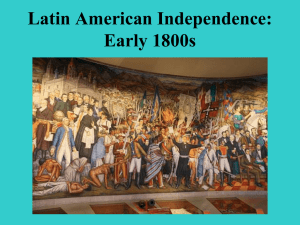
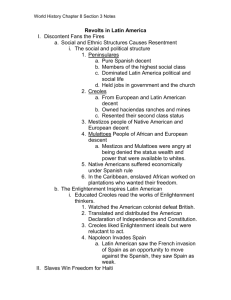
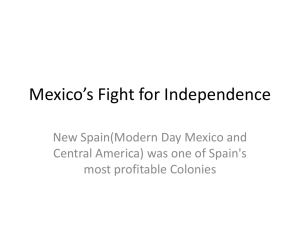
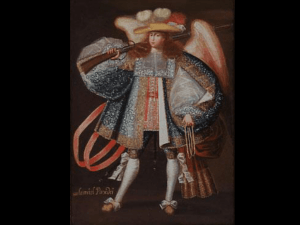
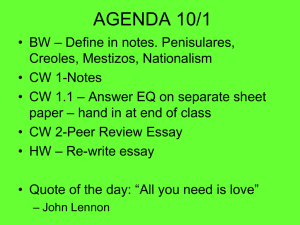
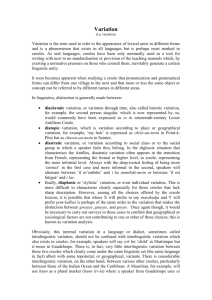
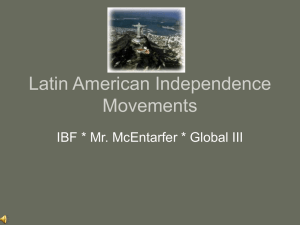
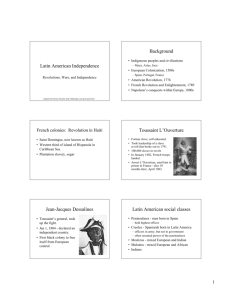
![Lesson 4.3 [WH] - MKHS](http://s3.studylib.net/store/data/008422552_1-b5d54a87b240306642b68067bfe9553e-300x300.png)
